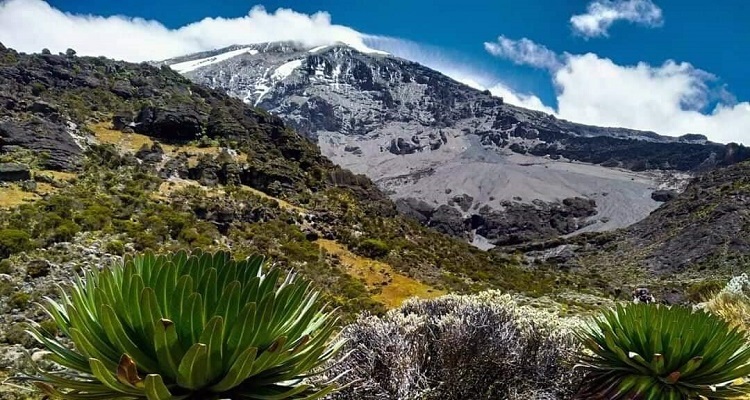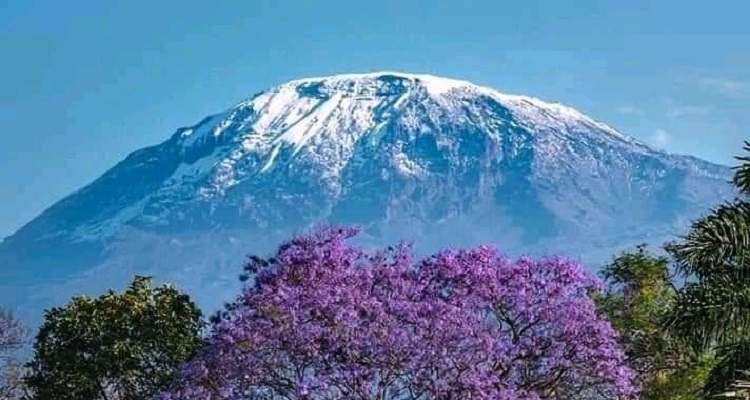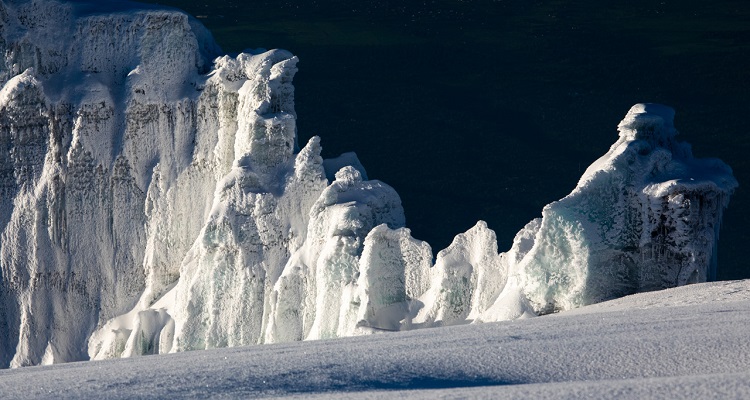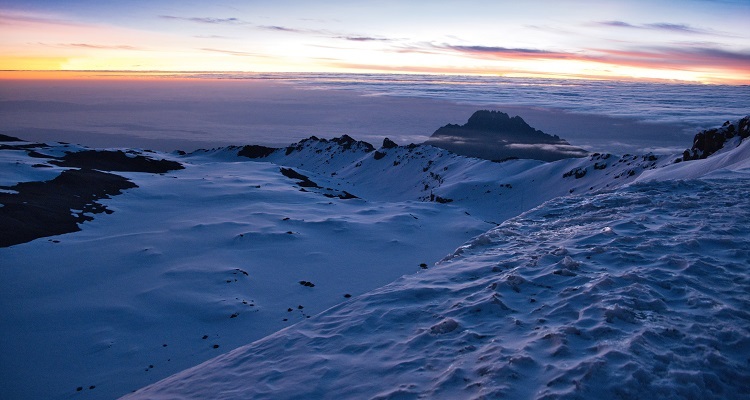5 Days Marangu Route - Mount Kilimanjaro Trekking

Description
Marangu Route is also known as the “Coca Cola” or “tourist” route. It is the easiest and shortest route to the summit. This is also the only route with the comforts of sleeping huts at every camp site with solar lights and comfortable beds. The huts are communal, and the huts have a sponge mattress, pillow and solar power. There are 60 beds at both Mandara and Kibo Huts and 120 beds at Horombo Hut. Bathrooms and running water are available at the two lower huts, but at Kibo hut running water is not available because it’s dry camp.All climbing groups, often from several countries around the world, share meals in dining huts providing a jovial and energetic atmosphere.This route is usually done in 5 days but can be done in 6 days for better acclimatization. The extra day can be spent resting at Horombo or conduct nature walk to Zebra rock.
ITINERARY
-
- Arrival
- DAY 1: MARANGU GATE – MANDARA HUTS
Distance: 7km /mi | 4-5 hrs | Rainforest
Elevation: 1830m/6000ft to 2740m/9000ft - DAY 2: MANDARA HUTS – HOROMBO HUTS
Distance: 11km/3mi | 6-8hrs | Mooreland
Elevation: 2740m/9000ft to 3690m/12,100ft - DAY 3: HOROMBO HUTS- KIBO HUTS
Distance: 10km/6mi | 6-8hrs | Semi-Desert
Elevation: 3690m/12,100ft to 4695m/15,400ft - DAY 4: Descending down to Horombo hut:
- DAY 5: Descending down to Marangu gate and Drive to Moshi
Upon arrival at Kilimanjaro International Airport, you will be met and transferred for overnight accommodation at Hotel B&B. Your head guide will meet you for your briefing, gear check and arrange for you equipments .
You will cross rain forest after the entry formalities at the gate. In the forest you can see Blue Monkeys and Black and White Colobus.If the arrival time at the camp permits we can take a 15 minute trip to Maundi crater, a volcanic crater that did not erupt due to the lack of magma pressure and fell down instead. You will have a nice view Mawenzi and Kibo peak. If the weather permits you will see the eastern part of the mountain, the border area between Tanzania and Kenya and Lake Chala in the distance.
You will be in the moorland zone. At the Horombo there are 120 beds (extra space for people walking down). You will be supplied with mattresses and pillows, also here are dining halls, toilets and solar power.
You will cross the Alpine desert, which is characterized by having strong winds, especially at the saddle area between Mawenzi and Kibo peak. Kibo hut is a dry camp, but the porters will carry water from Horombo hut. There are 60 beds with mattresses and pillows. There are no dedicated dining halls, so you will eat dinner in your room. There are toilets and solar power.At Kibo hut you will join the climbers from Rongai route, but they will sleep in their tents. You will walk with them on the way to the summit.
Summit Night:
The climb to the summit starts around midnight. The way is 6 kilometers long, but steep. It will take 6 to 8 hours. The early starting time allows you to see the sunrise on the top of the mountain. The route is a steep zigzag route. The first point you will reach Gilman’s point at 5685m, which is located at the crater rim. Then you walk about one kilometer along the crater to Stella point (5756m), where you will meet people climbing up all the other routes. The way from Stella point to Uhuru peak (5895m), the highest point of Africa, is a slow ascend that takes about 45 minutes.We recommend staying only for 10 minutes at Uhuru peak for view and pictures and then descending via the same route to Kibo camp.After sleep and brunch the client will walk down for 9km and 4-5 hours and spend a night at Horombo hut.
The way from Horombo to Marangu gate is 19km. The first part is the 11km walk from Horombo to Mandara where you will stop for lunch. After lunch you will walk again for 8km from Mandara to Marangu gate. The total walking time will be 6 – 8 hours, depending on the speed of the client. After you reach at the gate you will sign out and receive a certificate confirming your successful climb to Gilman’s, Stella and Uhuru peak. Afterwards we will drive you about 45m from the gate to your hotel in Moshi.
Map & Trekking Equipments
Technical Clothing:
1 - Waterproof Jacket, breathable with hood - $151 - Insulated Jacket, synthetic or down - $15
1 - Soft Jacket, fleece or soft-shell - $10
2 - Long Sleeve Shirt, light-weight, moisture-wicking fabric - $10
1 - Short Sleeve Shirt, light-weight, moisture-wicking fabric - $10
1 - Waterproof Pants, breathable (side zipper recommended) - $ 5
2 - Hiking Pants - $10
1 - Fleece Pants - $5
1 - Shorts (optional) - $5
1 - Long Underwear, moisture-wicking fabric - $5
3 - Underwear, moisture-wicking fabric recommended - $5
2 - Sport Bra (women)
Equipment
1 - Sleeping Bag, warm, four seasons - $251 - Camp Pillow, inflatable (optional)
1 - Trekking Poles, collapsible (highly recommended) - $10
1 - Head Lamp, with extra batteries - $20
1 - Duffel Bag, 50-90L capacity, for porters to carry your equipment - $15
1 - Daypack, 30-35L capacity, for you to carry your personal gear - $15
Paperwork
Passport – Valid more than 6 months.Visa (applied online but also available at JRO)
Immunization Papers
Insurance Document (That covers 6000m recommended) *
Accessories
1 - Sunglasses or Goggles1 - Backpack Cover, waterproof (optional)
1 - Water Bottle (Nalgene, 32 oz.)
1 - Water Bladder (Camelbak type, 3 liters)
1 - Towel, lightweight, quick-dry (optional)
1 - Pee Bottle, to avoid leaving room/tent at night (recommended)
Head Wear
1 - Brimmed Hat, for sun protection - $51 - Knit Hat, for warmth - $ 5
1 - Balaclava or Buff, for face coverage (optional) - $5
Hand Wear
1 - Gloves, warm (waterproof recommended) - $51 - Gloves, thin - $ 5
Footwear
1 - Hiking Boots, warm, waterproof, broken-in - $201 - Gym Shoes, to wear at camp (optional)
3 - Socks, wool or synthetic - $5
1 - Gaiters, waterproof (optional) - $5
Other Important things:
ToiletriesPrescriptions
Sunscreen
Lip Balm
Insect Repellent, containing DEET
First Aid Kit
Hand Sanitizer
Toilet Paper
Wet Wipes (recommended)
Snacks, light-weight, high calorie, high energy (optional)
Electrolytes, powder or tablets (optional)
Camera, with extra batteries (optional)
Other Trekking Information
So, you've decided to take on the challenge of tackling Africa's highest peak? Next, you need to think about the best time to climb Kilimanjaro, in terms of weather, trekking conditions and popularity. Although it's technically possible to trek Tanzania's Mount Kilimanjaro year round, there are certain months which are characterised by colder weather, more rain and potentially lots of snow on the summit. We generally advise that the best time to climb Kilimanjaro is during the warmest and driest times of year, from December to mid-March and mid-June to the end of October.
What is altitude sickness?
Also called Acute Mountain Sickness (AMS), it is an illness that can affect travellers at high altitudes, usually above 2400m (8000 feet) such as on Mount Kilimanjaro. Altitude sickness is the name given to the physiological and symptomatic reactions of the body to the low oxygen pressure (‘thinner’ air) that occurs at high altitude. When oxygen pressure falls, the body reacts by increasing breathing and heart rate and starts to produce more red blood cells. More red blood cells mean more vehicles to carry oxygen in the blood. The body also increases production of an enzyme that causes the release of oxygen from haemoglobin to the body tissues. Causes of altitude sicknessAMS is caused by reduced air pressure and lower oxygen levels at high altitudes. The faster you climb, the more likely you will get AMS. It is not only the height that matters so much, it is the rate of ascent.
You are at higher risk for AMS if you live near sea level and have had the illness before. Others at risk are those with diseases of the heart/lungs such as chronic bronchitis and asthma, people who are anaemic and those with a history of thromboses. Older people and children are also more susceptible to AMS. Symptoms of altitude sickness
Your symptoms will depend on the rate of your climb and how hard you push yourself. Symptoms usually start 12 – 24 hours after arrival at altitude and can affect the nervous system, lungs, muscles and heart. It is important to remember that reducing the symptoms is not curing the problem. The symptoms of altitude illness are similar to those of a hangover. Initially it starts with a headache, lack of appetite, tiredness and feeling off balance. Many hikers find it difficult to sleep. Then nausea sets in and vomiting starts. Headaches are getting more intense. If you continue, conditions might deteriorate. Sometimes the lack of oxygen can cause the leaking of fluid into the brain and lungs. High Altitude Cerebral Edema (HACE) and High Altitude Pulmonary Edema (HAPE) can develop. Our guides are very experienced with AMS. They will be monitoring all symptoms and will take a safe and well-informed decision on whether to proceed or descend. Most often symptoms will be swiftly relieved with decreasing altitude.
More severe acute mountain sickness includes: Blue skin and lips (cyanosis) and grey or pale complexion
Tight chest
Cough and coughing up blood
Confusion, decreased consciousness or withdrawal from social interaction
Not being able to walk in a straight line or unable to walk.
Prevention of altitude sickness
The slower you go, the better you will acclimatise and the higher you are likely to go without experiencing many symptoms. Recognise early symptoms of AMS and if symptoms increase, descend. Your guide will help you take a decision. The only cure is either acclimatisation or descent.Walk slowly, relax and enjoy.
Drink plenty of fluids while climbing, at least 3 to 4 liters of water per day.
Avoid alcohol when ascending
Talk to your doctor before you attempt to climb Kilimanjaro and ask about the correct preparation, first-aid medication and treatment options for AMS. If you are anaemic, ask your doctor for an iron supplement.
Colds
The risk of altitude sickness will be increased if you are already suffering from respiratory tract infection such as a cold. If you have the flu, do not travel until you are fully recovered. Both colds and the flu are caused by viruses and anti-biotics will not be effective as it is used against bacterial infections.Acute upper respiratory tract infections include pharyngitis/tonsillitis and laryngitis. Complications may lead to sinusitis, ear infection and sometimes bronchitis which can all be exacerbated by high altitude.
Some research has shown that restrained exercise might not change the severity and duration of the illness, but the intensity of a Kilimanjaro hike will jeopardise your recovery. Getting plenty of sleep is advised as sleep deprivation is associated with increased receptiveness to infection.
- Duration5 Days, 4 night
- Group SizePrice(Us $)
- I Person$ 1550
- 2-4 People$ 1400
- 5-7 People$ 1350
- 8-10 People$ 1250
- 11++ People$ 1200
Price includes
>>Private transport to & from Kilimanjaro International Airport to your accommodations in Moshi.>>2 nights of accommodation in Moshi.
>>Transportation to & from the Kilimanjaro gate
>>Park entry fees,
>>Camping fees.
>>Team Kilimanjaro Rescue fees.
>>18% VAT on tour fees & services
>>Friendly and professional mountain guides, cook and porters.
>>3 hot meals daily while on the mountain.
>>Enough treated & filtered drinking water throughout the trek.
>>Hot water for washing.
>>Fair wages for the mountain crew as approved by the Kilimanjaro National Park Authority (KINAPA), Kilimanjaro Association of Tour Operators (KIATO)
>>Government taxes
>>Portable oxygen tanks & ox meter
>>Emergency first-aid kit.
Price Exclude
>>Lunches, dinners and drinks at your hotel before and after climb.>>Travel insurance
>>Flights.
>>Laundry (Available at hotel).
>>Personal items and toiletries.
>>Tips for guides, porters and cook .


